Between Nandigram and a party that swears by human rights and lofty democratic ideals lies vast hypocrisy
Nandigram did not surprise me. I was anguished and angry but not surprised. I had heard the story of Alipurduar from Jugal Kishore Raybir.
This dalit activist, a believer in Gandhian non-violence, was the founder of UTJAS, (Uttar Bango Tapsili Jati O Adibasi Sangathan) an organisation of dalits and adivasis of north Bengal. Through the 1980s it demanded greater regional autonomy and justice for sons of the soil. Not only did the government turn a deaf ear, the ruling party launched an offensive against them, branding them ‘separatist’ or ‘bichhinatabadi’.
The story of Alipurduar goes back to January 10 1987, twenty years before Nandigram. On that day, UTJAS had organised a rally of what they estimated to be about 50,000 people in Alipurduar, the headquarters of Cooch Behar district. As the rally started, they noticed something unusual: The police was nowhere in sight. Soon the rallyists found themselves surrounded by and under attack from the armed cadre of the CPM. The rally was dispersed as unarmed protesters were beaten and chased. The police surfaced, only to arrest the victims, once the party cadre had finished their job.
They say Jugal Raybir’s commitment to non-violence prevented a blood bath that day. But that day also marked the end of the rise of UTJAS as a political challenge to the Party. For the next few months, the UTJAS cadre was hounded by the police, attacked by the CPM and not allowed to hold even indoor meetings. This dalit movement wilted under the onslaught of the state, police and Party. That prepared the ground for the rise of militant outfits like the Kamtapur Liberation Organisation. But that is a different story.
Note the parallels between Nandigram and Alipurduar: The Party faces a political challenge, decides to nip it in the bud and executes an onslaught in sync with the police and administration. The only difference this time was that there was unexpected resistance. And that an anti-SEZ movement makes more news today than a dalit movement did twenty years ago. There were no Gopal Gandhi or Tanika and Sumit Sarkar then to point out that the emperor had no clothes.
Nandigram may not have been the worst case of police firing. We have seen similar incidents in Orissa, Rajasthan and UP in recent times. West Bengal is certainly not the only state where the ruling party uses the state machinery to crush its political rivals. Om Prakash Chautala could still teach the CPM a lesson or two in this game. But there is one thing Chautala never did. He never talked of human rights and lofty democratic ideals. A Chautala could not have issued the injured yet clinical statement that the CPM’s Politburo did after the Nandigram killings. The cold-bloodedness of the statement reminds you of the BJP top brass’s reaction after Gujarat.
This gap between the CPM’s preaching and practice did not surprise me. I have been looking at Christophe Jaffrelot’s research on the social profile of MLAs in India. His analysis shows that the proportion of upper caste MLAs is on the decline all over the country since the 1960s. There is only one exception: In West Bengal the proportion of upper castes has increased in the state assembly after 1977, after the Left Front came to power. A coincidence? Not if you calculate the caste composition of successive Left Front ministries: About two thirds of the ministers come from the top three jatis (Brahman, Boddis, Kayasthas). Perhaps you did not notice that West Bengal was the last major state to come out with an OBC list to implement Mandal. You might say, the CPM believes in class, not caste. Fair enough, but then why is the CPM in Delhi so aggressive about championing Mandal? Why does it present itself as more Mandalite than thou?
Or read the data supplied by the West Bengal government to the Sachar Committee. With 25.2 per cent of Muslim population, the state government has provided just 2.1 per cent of the government jobs to Muslims. West Bengal has the worst record of all Indian states in this respect. Gujarat has just 9.1 per cent Muslims and has 5.4 per cent Muslims among government employees. The irony, of course, is that the CPM was the first party to come out with a statement demanding implementation of the Sachar Report!
Will the CPM stop playing games? A few months ago the Party held an unprecedented State Secretariat meeting to discuss the Cricket Association of Bengal elections. The CM was openly backing Kolkata’s police chief only to be opposed by his own sports minister and Jyoti Basu. The Party finally declared that the CPM will not play politics with games, at least not with cricket. But what about playing games with politics? Will the CPM stop that as well?
Perhaps we should ask: Can the CPM stop playing games? Or are these games essential for survival for a party that has lost touch with the times, has lost faith in its own ideology and has come to fear its own cadre and election machine. Satyajit Ray’s Shatranj ke Khiladi was a brilliant depiction of the games nobility played at the time of its historic decline. Alimuddin Street may not have time for such bourgeois indulgence, but the point of this film would not be lost on an avid cinema buff like Buddhadeb Bhattacharjee. Sometimes it is not the player who plays the game; it is the game that consumes the player.
Source : http://www.indianexpress.com/story/26169.html
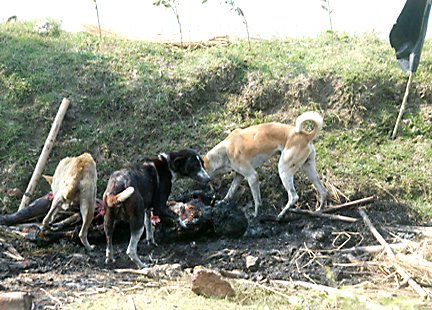

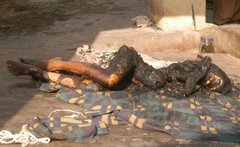
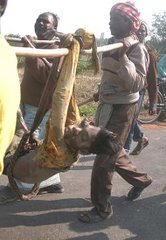
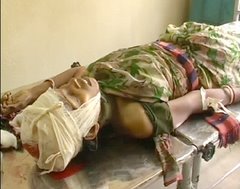

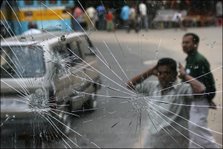
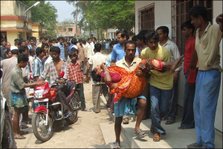

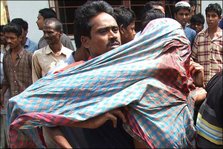


1 comment:
some poignant points raised from an interesting angle by yogendra..
Post a Comment